Abstract
Pair-wise genetic distances based on six genetic systems (Rh, MNSs, Kidd, Duffy, Diego, and haptoglobins) are presented for seven villages of Makiritare Indians, seven villages of Yanomama Indians, and 12 Indian tribes of Central and South America. It is shown that the mean genetic distance between Indian villages is 85-90 per cent of the distance between tribes. Since in the past, the initial event in the formation of a new tribe was probably the breaking away of one or several related villages from an established tribe, it is clear that this initial event could have profound consequences for subsequent tribal gene frequencies. By the criterion of changes in gene frequency in polymorphic genetic systems, the maximal rate of evolution in the American Indian has been approximately 100 times more rapid than the mean rate suggested by calculations based on amino acid substitutions in certain polypeptides of a variety of organisms. The above-mentioned findings could account in part for this 100-fold difference. Some other factors which might diminish the apparent difference between the results of these two types of calculations are mentioned.
Full text
PDF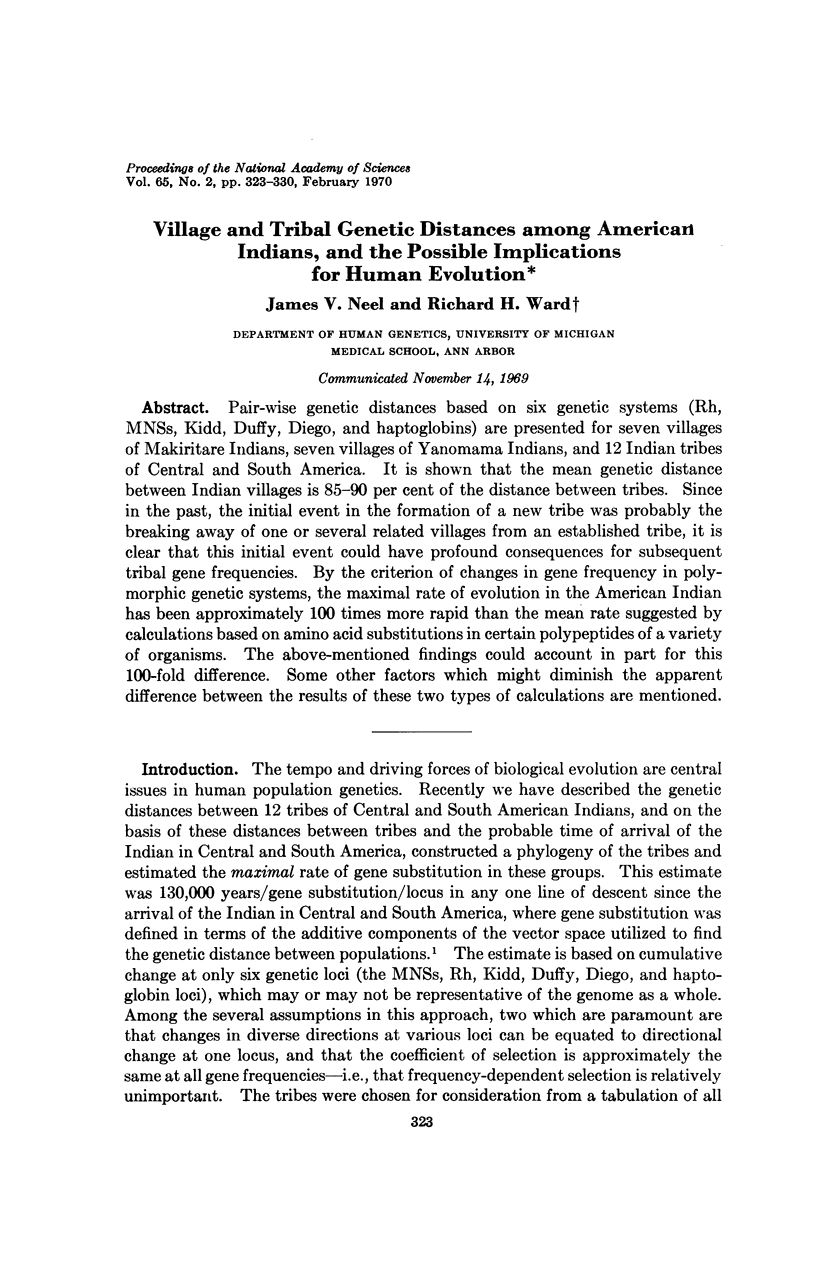
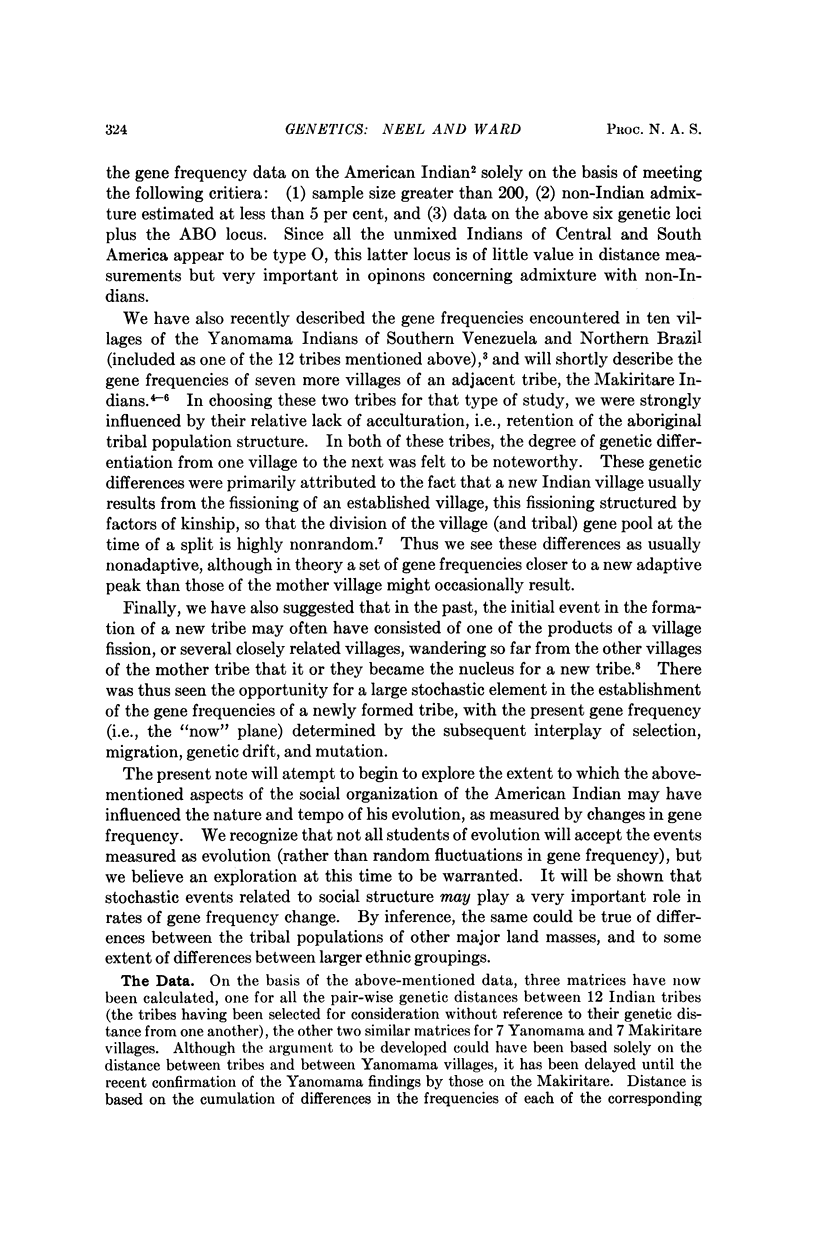
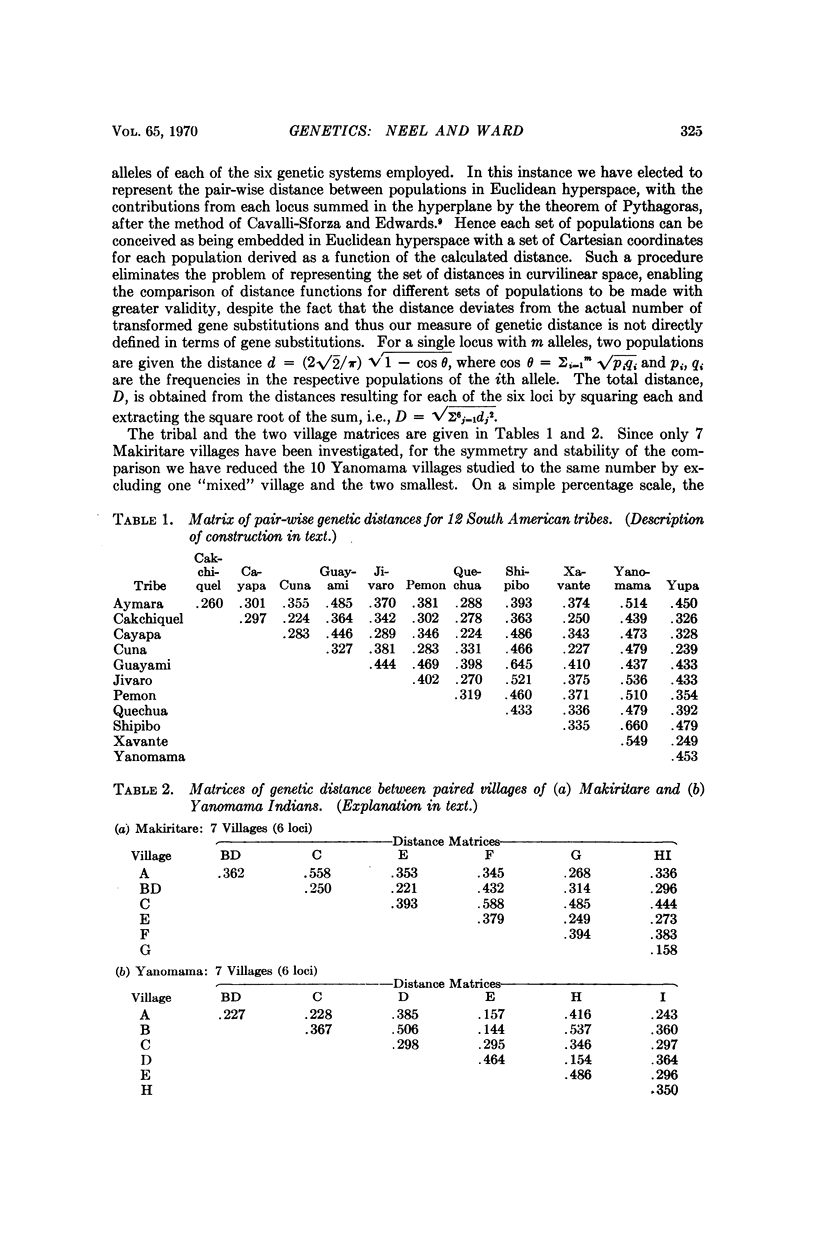
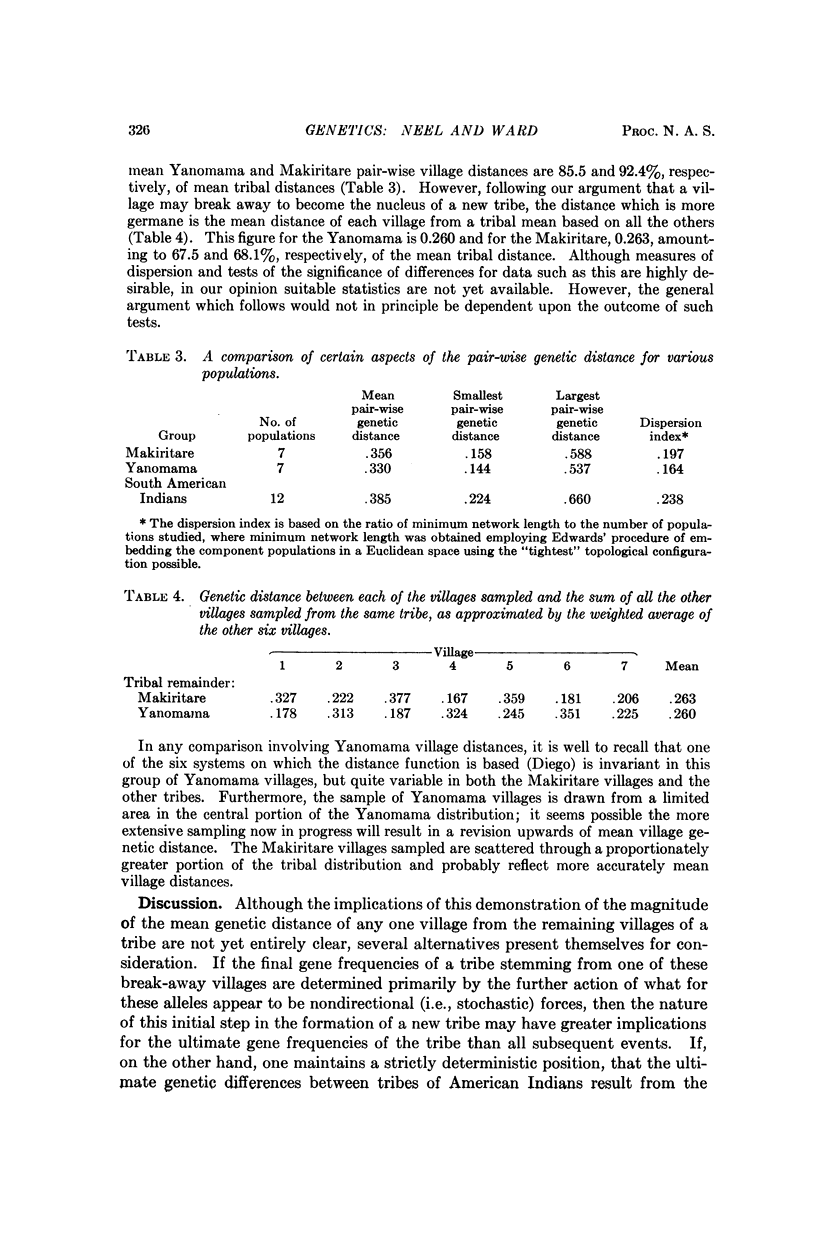
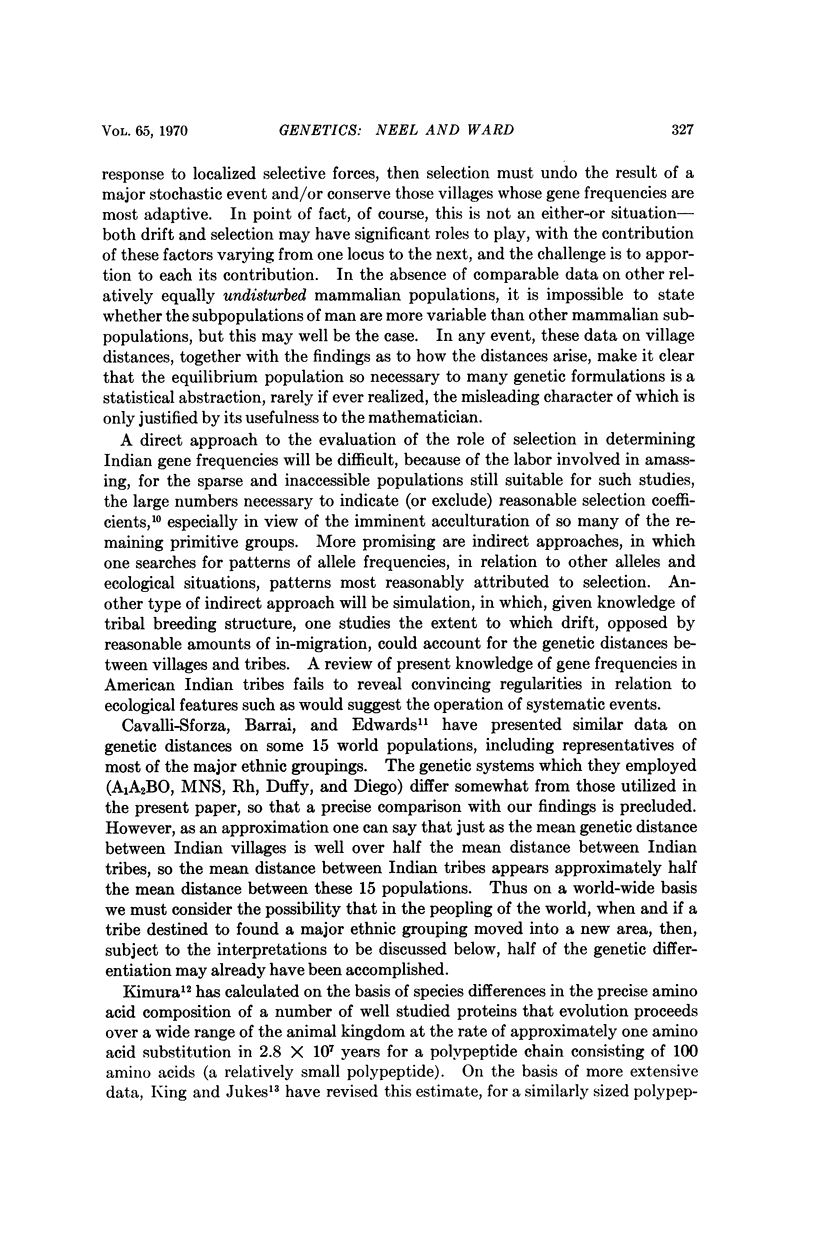
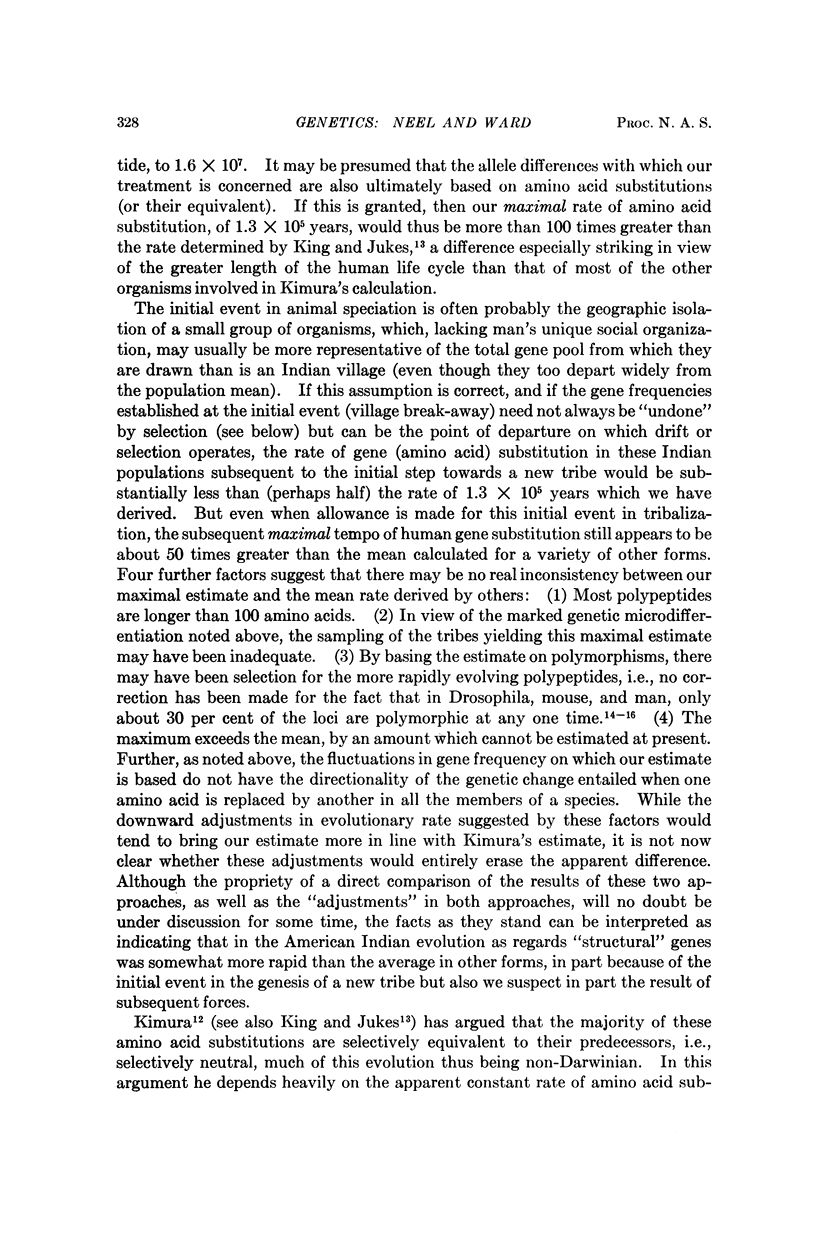
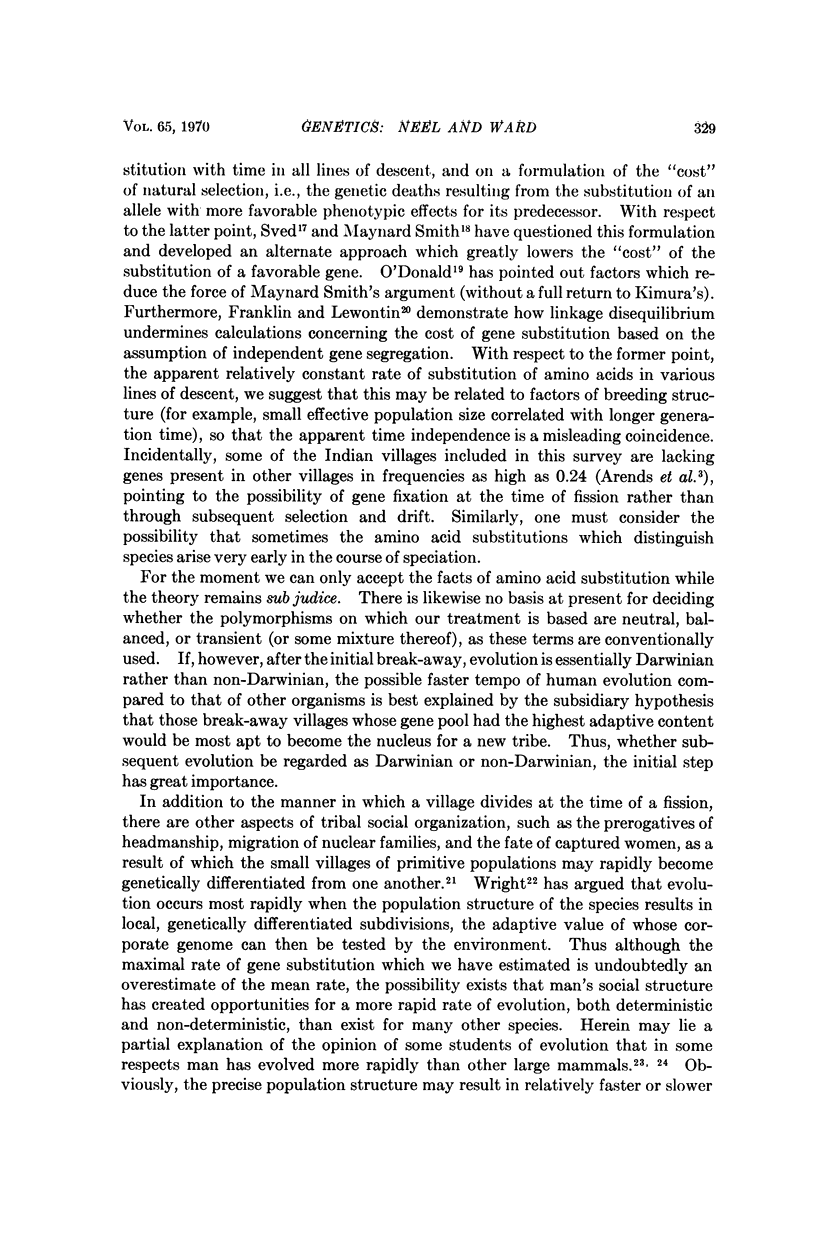
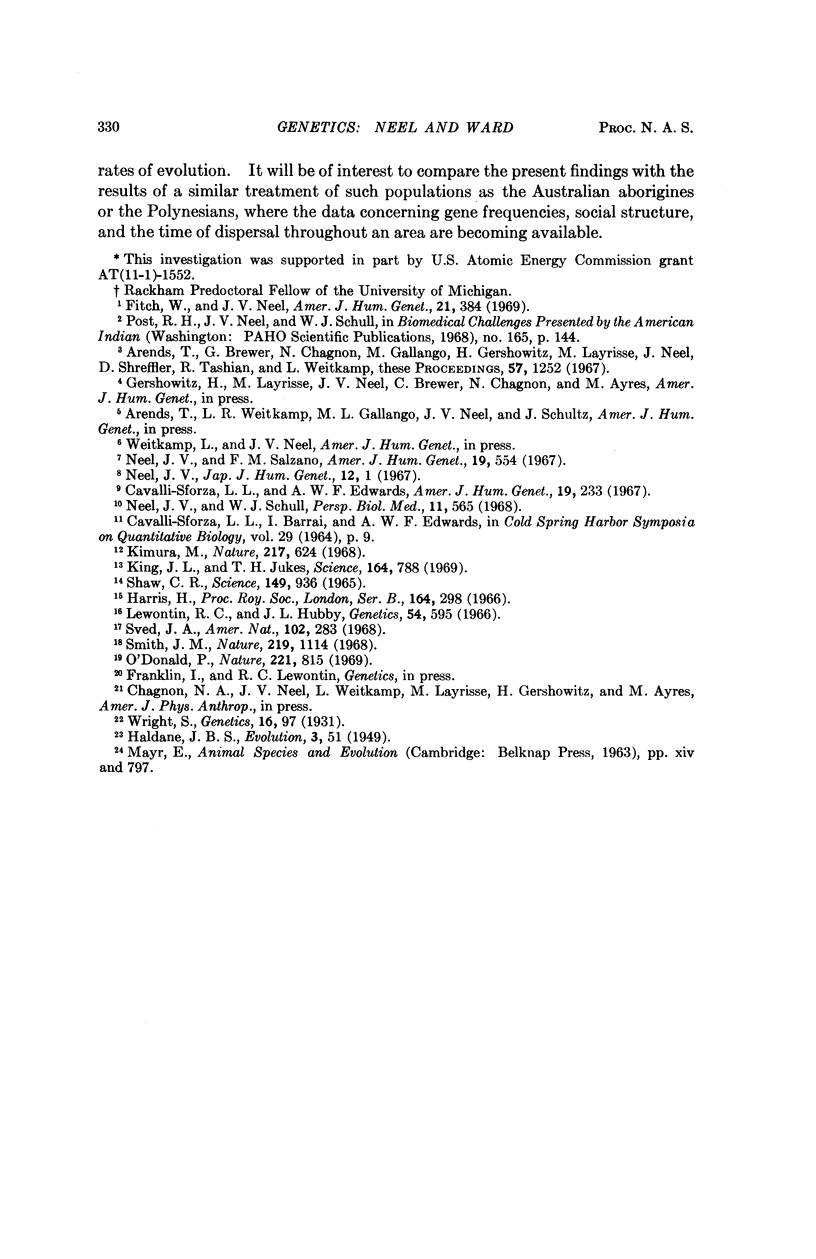
Selected References
These references are in PubMed. This may not be the complete list of references from this article.
- Arends T., Brewer G., Chagnon N., Gallango M. L., Gershowitz H., Layrisse M., Neel J., Shreffler D., Tashian R., Weitkamp L. Intratribal genetic differentiation among the Yanomama Indians of southern Venezuela. Proc Natl Acad Sci U S A. 1967 May;57(5):1252–1259. doi: 10.1073/pnas.57.5.1252. [DOI] [PMC free article] [PubMed] [Google Scholar]
- Cavalli-Sforza L. L., Edwards A. W. Phylogenetic analysis. Models and estimation procedures. Am J Hum Genet. 1967 May;19(3 Pt 1):233–257. [PMC free article] [PubMed] [Google Scholar]
- Fitch W. M., Neel J. V. The phylogenic relationships of some Indian tribes of Central and South America. Am J Hum Genet. 1969 Jul;21(4):384–397. [PMC free article] [PubMed] [Google Scholar]
- Kimura M. Evolutionary rate at the molecular level. Nature. 1968 Feb 17;217(5129):624–626. doi: 10.1038/217624a0. [DOI] [PubMed] [Google Scholar]
- King J. L., Jukes T. H. Non-Darwinian evolution. Science. 1969 May 16;164(3881):788–798. doi: 10.1126/science.164.3881.788. [DOI] [PubMed] [Google Scholar]
- Lewontin R. C., Hubby J. L. A molecular approach to the study of genic heterozygosity in natural populations. II. Amount of variation and degree of heterozygosity in natural populations of Drosophila pseudoobscura. Genetics. 1966 Aug;54(2):595–609. doi: 10.1093/genetics/54.2.595. [DOI] [PMC free article] [PubMed] [Google Scholar]
- Neel J. V., Salzano F. M. Further studies on the Xavante Indians. X. Some hypotheses-generalizations resulting from these studies. Am J Hum Genet. 1967 Jul;19(4):554–574. [PMC free article] [PubMed] [Google Scholar]
- Neel J. V., Schull W. J. On some trends in understanding the genetics of man. Perspect Biol Med. 1968 Summer;11(4):565–602. doi: 10.1353/pbm.1968.0011. [DOI] [PubMed] [Google Scholar]
- O'Donald P. "Haldane's dilemma" and the rate of natural selection. Nature. 1969 Mar 1;221(5183):815–817. doi: 10.1038/221815a0. [DOI] [PubMed] [Google Scholar]
- Shaw C. R. Electrophoretic variation in enzymes. Science. 1965 Aug 27;149(3687):936–943. doi: 10.1126/science.149.3687.936. [DOI] [PubMed] [Google Scholar]
- Smith J. M. "Haldane's dilemma" and the rate of evolution. Nature. 1968 Sep 14;219(5159):1114–1116. doi: 10.1038/2191114a0. [DOI] [PubMed] [Google Scholar]
- Wright S. Evolution in Mendelian Populations. Genetics. 1931 Mar;16(2):97–159. doi: 10.1093/genetics/16.2.97. [DOI] [PMC free article] [PubMed] [Google Scholar]


